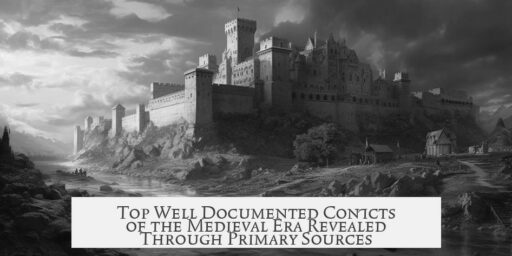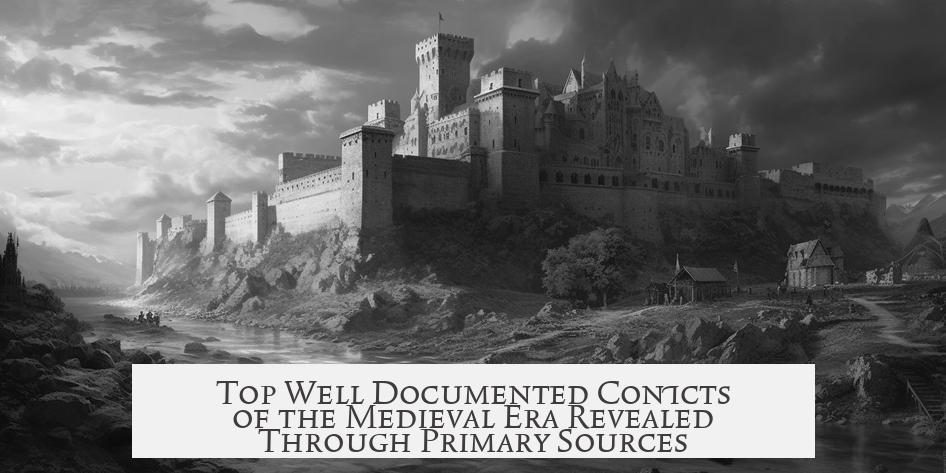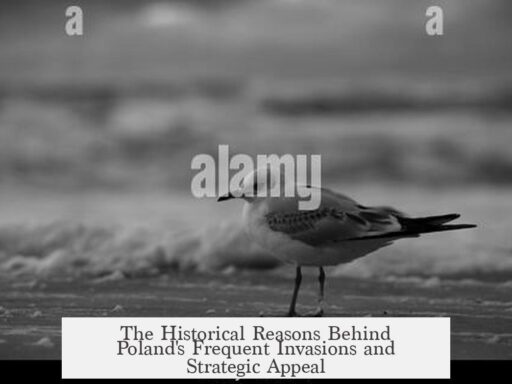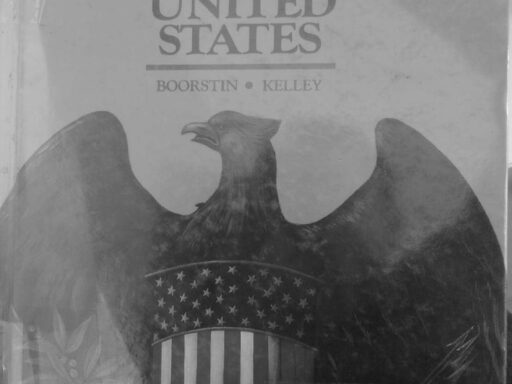Some of the most well documented medieval conflicts include the Hundred Years’ War, which spans from 1337 to 1453. This conflict benefits from a rich body of primary sources, chronicles, and scholarly compilations that provide detailed insights.
The Hundred Years’ War stands out due to its extensive documentation. Numerous first-hand primary sources offer valuable perspectives. Important chronicles include:
- The True Chronicles of Jean le Bel — by a soldier with first-hand experience.
- The Chronicle of Geoffrey le Baker of Swinbrook
- Froissart’s Chronicles — popular but known for some embellishment.
- The Chronica Maiora of Thomas Walsingham
- Gesta Henrici Quinti (Deeds of Henry V)
Jean le Bel’s accounts are valued for their detail and utilitarian description, as he often relies on his own experiences. In contrast, Jean Froissart, though a contemporary 14th-century chronicler, is known to romanticize events, requiring careful cross-referencing with other sources.
Several edited collections or casebooks compile these primary sources along with scholarly interpretations, improving accessibility and understanding. Examples include:
- The Life and Campaigns of the Black Prince edited by Richard Barber
- The Wars of Edward III: Sources and Interpretations by Clifford J. Rogers
- The Battle of Crécy: A Casebook by Michael Livingston and Kelly DeVries
- The Battle of Agincourt: Sources and Interpretations by Anne Curry
These editions often contain footnotes that highlight potential inaccuracies, corrections, and alternative interpretations, crucial for scholarly inquiry.
Relying on multiple sources is essential. Conflicting accounts, corroborations, and nuances help shape a fuller understanding of medieval conflicts. This approach avoids the pitfalls of taking any single chronicle at face value.
- The Hundred Years’ War is a prime example of a well-documented medieval conflict.
- First-hand chronicles such as Jean le Bel’s provide reliable narratives.
- Some chroniclers, Froissart included, embellish, requiring cautious use.
- Scholarly casebooks compile and interpret various sources.
- Comparing multiple accounts offers a deeper, more accurate picture.
What Are Some of the Most Well Documented Medieval Conflicts?
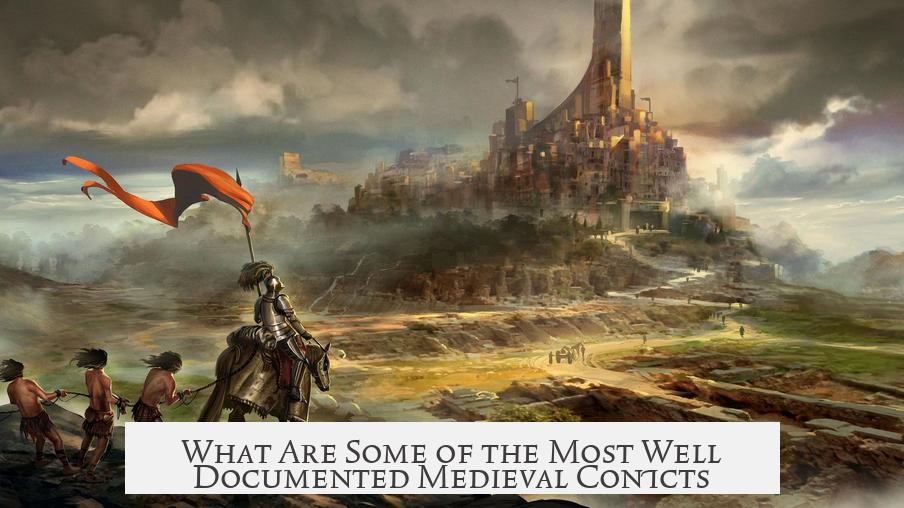
When it comes to medieval conflicts, the Hundred Years’ War (1337-1453) confidently claims the spotlight as one of the most meticulously documented clashes of the era. This epic saga between England and France unfolds across more than a century and boasts a treasure trove of primary sources, chronicles, and scholarly research that bring the drama, politics, and battles to vivid life.
So, why is the Hundred Years’ War such a star in the medieval records? And what makes its documentation stand out compared to other conflicts of the Middle Ages? Welcome to a journey through dusty manuscripts, eyewitness accounts, and the tricky world of medieval chroniclers.
Diving Into Primary Sources: Real Voices of Medieval Witnesses
The richness of the Hundred Years’ War’s documentation owes a lot to the first-hand sources. Imagine scribes and chroniclers as medieval journalists, albeit with quills and a flair for storytelling. Some of the standout voices include:
- The True Chronicles of Jean le Bel, a soldier’s narrative offering a practical, unvarnished glimpse into battles and medieval life.
- The Chronicle of Geoffrey le Baker of Swinbrook, providing details often overlooked elsewhere.
- Froissart’s Chronicles, the flamboyant storyteller whose accounts brim with drama—but require cautious readjustment.
- The Chronica Maiora of Thomas Walsingham, from a monk’s viewpoint capturing the wider religious and social context.
- Gesta Henrici Quinti (Deeds of Henry V), focusing on the exploits of one of the war’s iconic kings.
Jean le Bel holds a special place because he actually fought in the war. His descriptions tend to favor facts over ornamentation when he recounts firsthand experiences. This kind of grounded narrative is a historian’s dream.
The Casebook Revolution: Compilations That Clarify the Chaos
Having multiple voices is crucial, but the sheer volume of material can be overwhelming. Enter the casebooks—carefully curated collections of primary sources, analysis, and commentary. Editors like Richard Barber and Anne Curry assemble war stories like professional matchmakers.
- The Life and Campaigns of the Black Prince gathers materials around Edward, the charismatic prince whose military brilliance is legendary.
- The Wars of Edward III: Sources and Interpretations, curated by Clifford J. Rogers, provides insights into one of England’s most assertive monarchs during the war.
- The Battle of Crécy: A Casebook by Michael Livingston and Kelly DeVries dissects one of the essential early battles.
- The Battle of Agincourt: Sources and Interpretations by Anne Curry recounts the nail-biting clash that still fascinates today.
These casebooks let us compare perspectives, spot contradictions, and dive into footnotes that sharply critique and verify the chroniclers’ stories.
Trust but Verify: The Chronicles’ Rollercoaster Reliability
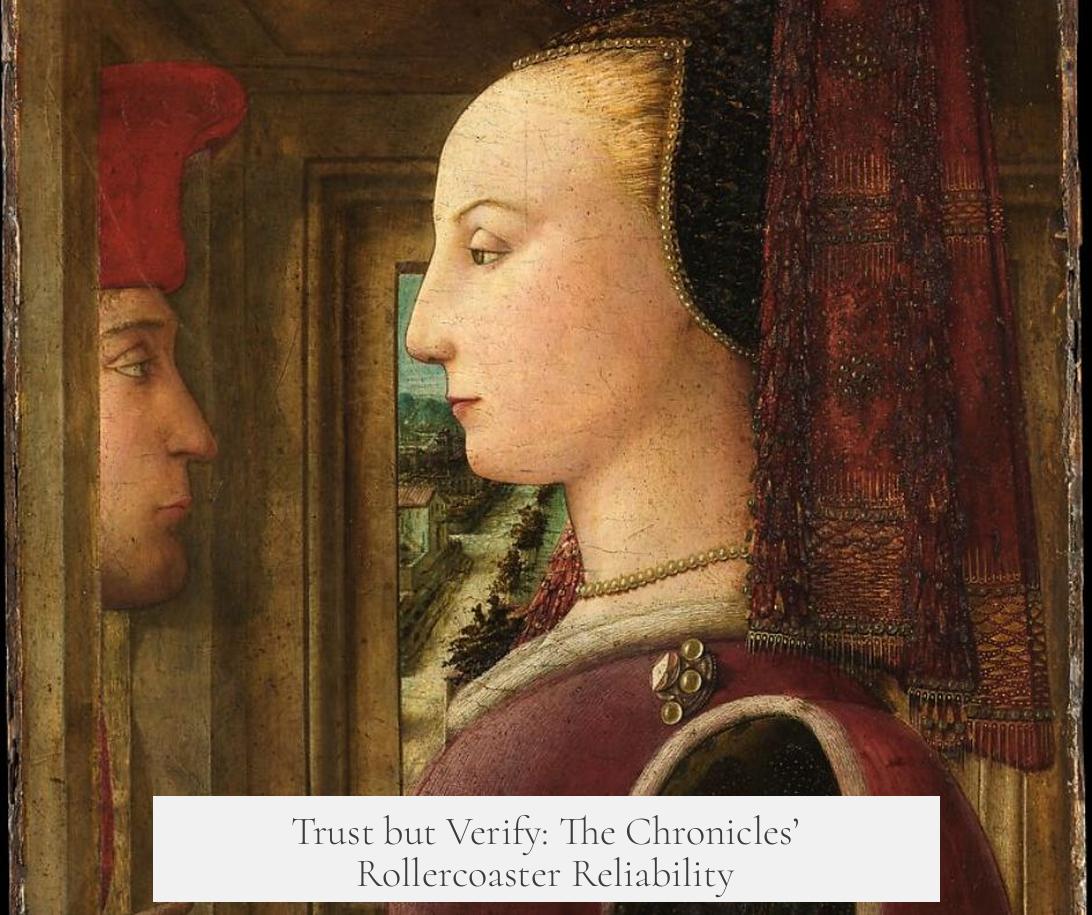
Want to know the medieval version of “fake news”? Chronicles can be charmingly unreliable. Froissart, for example, dances on the fine line between fact and fiction. His chronicles sparkle with vivid scenes and knightly valor but sometimes exaggerate or romanticize events.
Yet, don’t dismiss Froissart too quickly. His proximity to events—he was alive during much of the war—gives his writing a contemporary flavor that later chroniclers lack. He’s invaluable for understanding the medieval mindset, even if you read between the lines with a historian’s skepticism.
On the other hand, Jean le Bel sticks closer to the cold facts, making his accounts more trustworthy. The critical academic footnotes in modern editions highlight blatant inaccuracies. For example, one such note in Froissart’s section on King Richard II bluntly states that errors “are too numerous to list.” Ouch.
Why Reading Multiple Sources Is a Must-Do History Hack
History isn’t a single-track narrative, especially medieval history. Different chroniclers often contradict each other on key points. So, the real secret to understanding these conflicts is to read widely and critically.
When you expose yourself to a variety of voices, you spot patterns, cross-check facts, and eventually reach a nuanced understanding that no single chronicler could provide. This is why scholars treasure casebooks and scholarly editions laden with footnotes—they help unlock the puzzle pieces.
Are There Other Well Documented Medieval Conflicts?
While the Hundred Years’ War stands as a titan in documentation, some other medieval conflicts also shine through their records, albeit often less comprehensively:
- The Wars of the Roses (1455-1487): The dynastic struggle in England has plenty of chronicles, letters, heraldic manuscripts, and government records. But they tend to be more biased and politically charged given the English court intrigues.
- The Crusades: Especially the earlier ones, are documented in many Latin, Arabic, and Byzantine texts. However, these sources vary widely in perspective and chronology, making cohesive narratives challenging.
- The Reconquista: The Christian reconquest of Iberia is documented through chronicles like the Chronicle of Alfonso VIII. Yet, many sources have regional biases and religious fervor influencing their accounts.
But none, truly, combine the wealth of well-preserved documents, range of perspectives, and critical research attention that the Hundred Years’ War enjoys. It is the medieval conflict with an unparalleled documentary richness.
Wrapping It Up: The Value of Well Documented Medieval Conflicts
Modern readers, historians, and enthusiasts benefit hugely from the depth of documentation on the Hundred Years’ War. It offers:
- A vivid tapestry woven from soldiers’ memories, monks’ sermons, and kings’ proclamations.
- The chance to critically analyze and question official narratives to uncover nuances.
- Insights into medieval military technology, diplomacy, and cultural clashes.
- Engagement with lively storytelling that remains relevant nearly 700 years later.
Ultimately, well documented conflicts like the Hundred Years’ War provide an immersive window into a world where swords clashed, crowns vied for supremacy, and chroniclers did their best to keep score—sometimes with a dash of medieval flair.
So, next time you hear “medieval war,” remember: it’s not just about knights jousting. It’s about stories captured, debated, and preserved across centuries. Want to be a history detective? Start with these chronicles, compare them, and ask the tough questions that bring the past into clearer focus.
